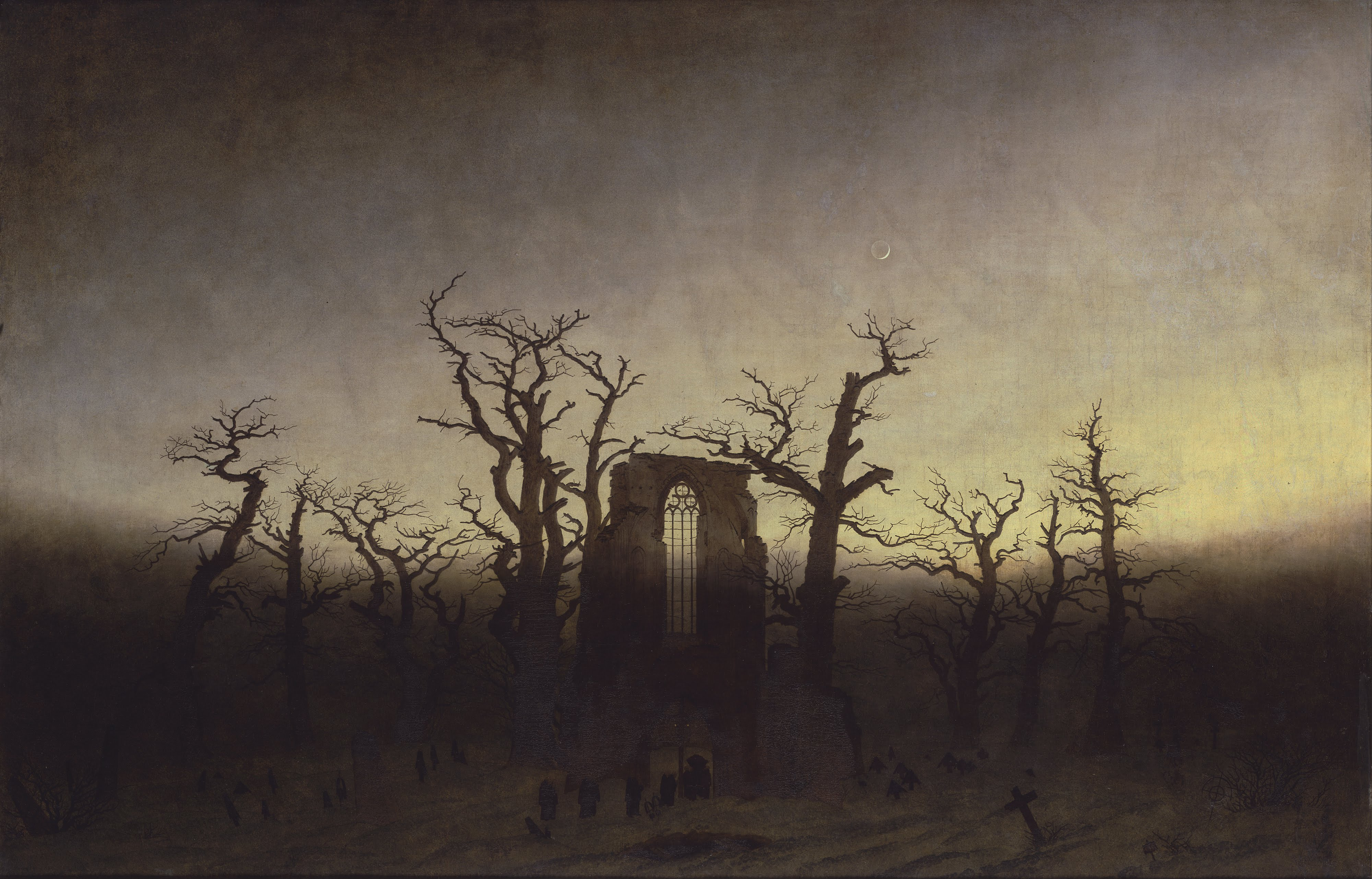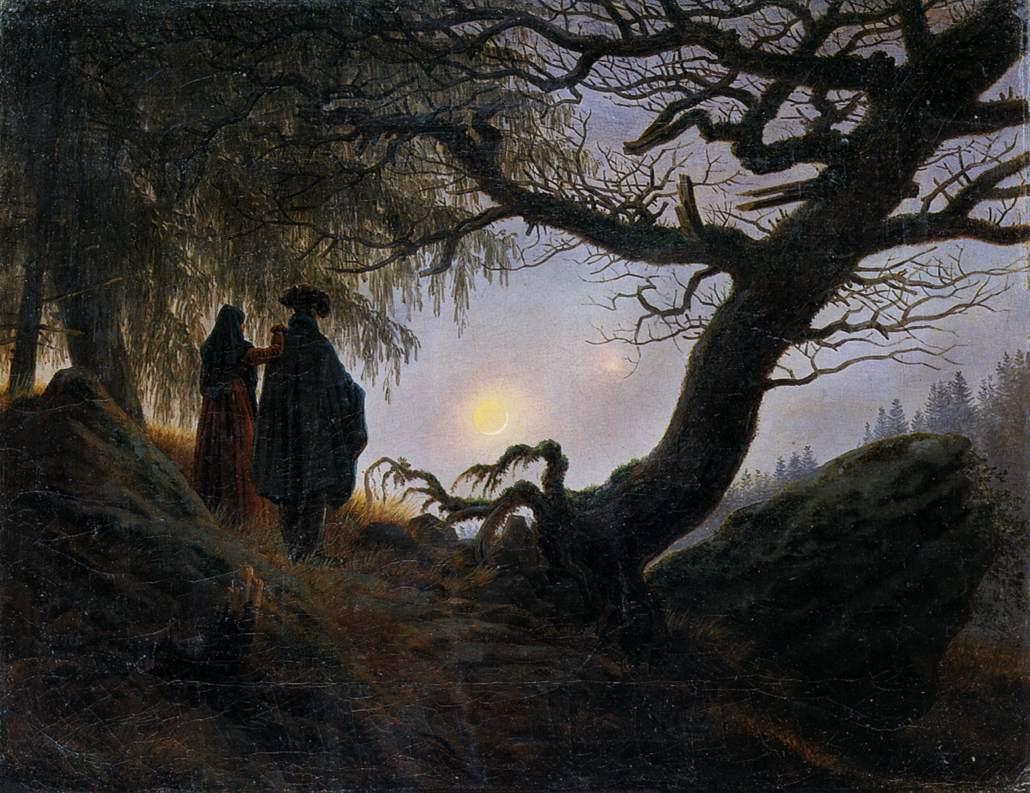I’ll be honest and say I feel like a bit of a wiener for being of this opinion, but…
…for the most part, I don’t really care for a large portion of the work from these movements (beyond some favorites such as Goya, Delacroix, and a few others). Aesthetically, there’s so much ornate, grandiose and powdered frippery with things like Rococo that I get a little worn out with it. Particularly the Rococo stuff; at a certain point, some of it feels like the aesthetic equivalent of honking clown shoes. Perhaps I’m just an uncultured rube (you can dress me up, but you can’t take me to Versailles).
Imagine then, my surprise upon finding Caspar David Friedrich in the middle of all that. His work featured so many unusual scenes of haunting, melancholy landscapes that it seemed a bit of a rejection of everything we had seen out of the major Classicism players. I felt immediately drawn in with his work, as thematically I also enjoy drawing similar material.
He seems to be a figure surrounded by much melancholy and tragedy throughout his life; at a young age he lost both sisters, his mother, and then his brother (who drowned saving him when he fell through ice), he then fell into multiple recorded major depressive episodes and was known as the taciturn “man from the North”.
He is also attributed with his work lending legitimacy to landscape paintings, which had been perceived as “unimportant” during the time period. I found much of his work evoked a feeling of bleak grandeur, human frailty in the face of eternal natural forces and a sense of isolation. All in all, my kind of aesthetic!

The Abbey in the Oakwood (1808 – 1810)
The colours in The Abbey in the Oakwood I found subdued and almost threatening in their bleakness, immediately calling to mind some of my favorite palettes from contemporary artist David S. Herrerias. The silhouettes are gorgeous and haunting, I found this one grabbing my imagination with both fists. This, among several of his other pieces are paintings I would very much like to see in person at some point.

Two Men Contemplating the Moon (1825–30)

The Cemetery Entrance (1825) – The Figure peering in, dwarfed and framed by the solemn pillars. They have an incredible weight to them, with the gate wide open and beckoning inwards. Suggesting an invitation to something everlasting and stolidly ever-present as death itself.

Monastery Graveyard in the Snow (1817 – 1819). Stark, desolate and evocative. I can’t get over the incredible value range he’s got in this painting.
Research:
https://www.britannica.com/biography/Caspar-David-Friedrich
https://www.caspardavidfriedrich.org/
https://www.theartstory.org/artist-friedrich-caspar-david.htm
Picture sourcing:
https://en.wikipedia.org/wiki/Caspar_David_Friedrich#/media/File:Caspar_David_Friedrich_-_Man_and_Woman_Contemplating_the_Moon_-_WGA08271.jpg
https://en.wikipedia.org/wiki/Caspar_David_Friedrich#/media/File:Caspar_David_Friedrich_-_Abtei_im_Eichwald_-_Google_Art_Project.jpg
https://www.bc.edu/bc_org/avp/cas/his/CoreArt/art/resourcesd/fri_clcem.jpg
https://www.caspardavidfriedrich.org/

Leave a Reply